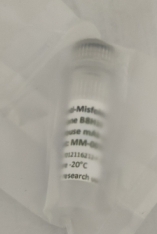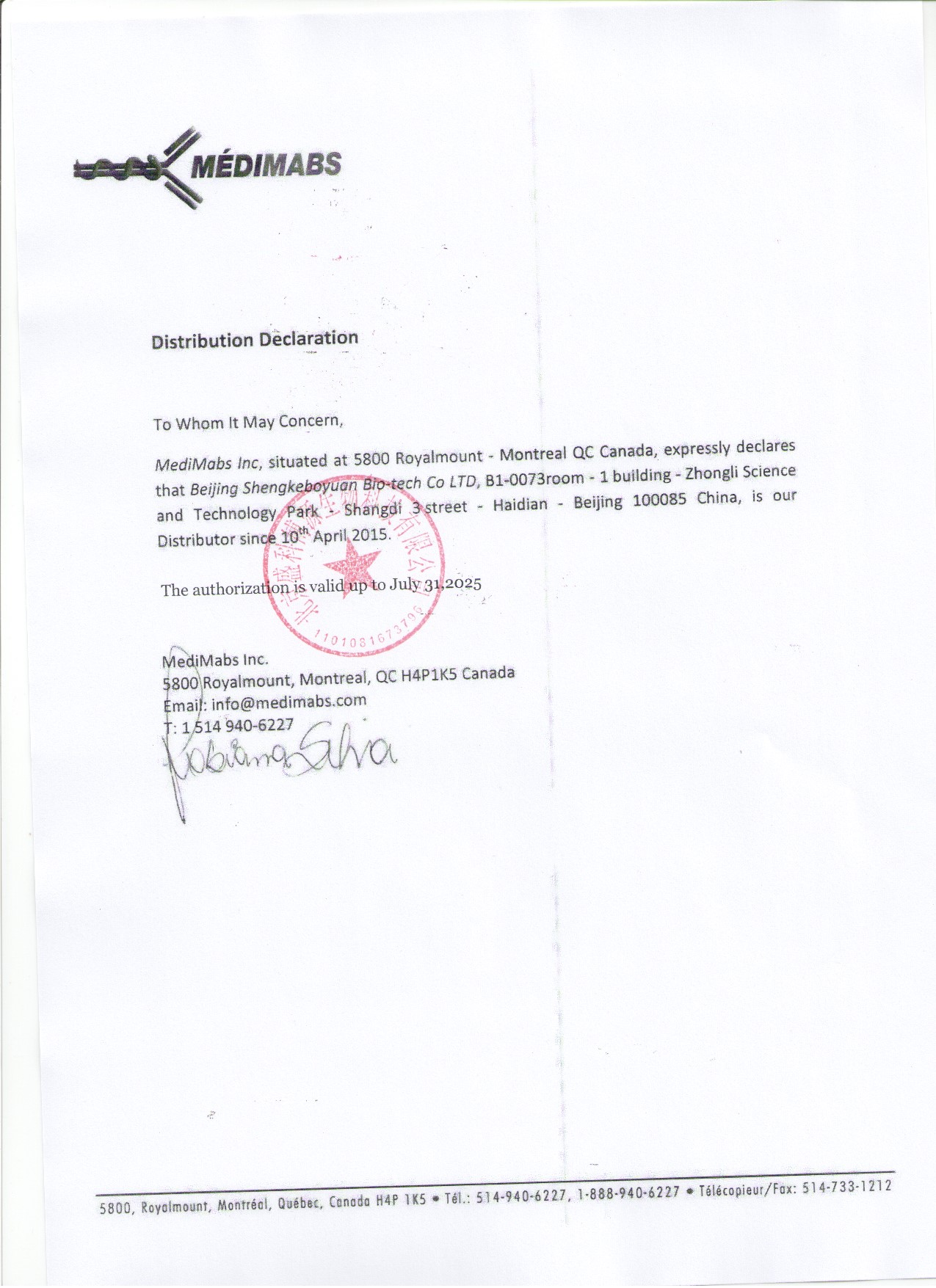 首页>
生物试剂
首页>
生物试剂
商家描述
商家资质信息
产品评价(0)
Target
Somatostatin
Target background
Somatostatin or growth hormone-inhibiting hormone (GHIH) is a peptide hormone that inhibits the release of somatotropin (growth hormone) from the anterior pituitary gland in the hypothalamus. Somatostatin also inhibits the release of peptide hormones in many other tissues by binding to high-affinity G protein-coupled somatostatin receptors. Two active forms have been described: a form that is 14 amino acids in length and a form that is 28 amino acids in length, which are produced by alternate cleavage of the single pre-pro-protein encoded by this gene.
Target alias
Growth hormone release-inhibiting factor
Immunogen
Synthetic peptide corresponding to amino acids 1-14 of cyclic somatostatin
Specificity
The antibody recognizes somatostatin. This antibody does not cross-react with a number of other neuropeptides (e.g. enkephalins, other endorphins, substance P, CGRP) and partially cross-reacts with somatostatin fragments.
Clone ID
YC7
Isotype
IgG2b
Preservative
None
Format
Lyophilized tissue culture supernatant
Recommend starting dilution
If reconstituted with deionized water in 1 mL: 1:50 - 1:200 for formaldehyde fixed tissue. Optimal dilution has to be determined by the user.
Limitations
Research Use Only
Storage
Lyophilized antibodies can be kept at 4ºC for up to 3 months and should be kept at -20ºC for long-term storage (2 years). To avoid freeze-thaw cycles, reconstituted antibodies should be aliquoted before freezing for long-term (1 year) storage (-80ºC) or kept at 4ºC for short-term usage (2 months). For maximum recovery of product, centrifuge the original vial prior to removing the cap. Further dilutions can be made with the assay buffer. After the maximum long-term storage period (2 years lyophilized or 1 year reconstituted) antibodies should be tested in your assay with a standard sample to verify if you have noticed any decrease in their efficacy. To limit antibody loss or degradation, BSA (final concentration 1%) and sodium azide (final concentration 0.02%) can be added to the suggested first dilution. It is important to first verify if those preservatives are compatible with your assay.
 会员登录
会员登录.getTime()%>)
 购物车()
购物车()

 成功收藏产品
成功收藏产品
